Discover 11 hidden attractions, cool sights, and unusual things to do in Grantham (United Kingdom). Don't miss out on these must-see attractions: Belton House, Belvoir Castle, and Woolsthorpe Manor. Also, be sure to include Guildhall Arts Centre in your itinerary.
Below, you can find the list of the most amazing places you should visit in Grantham (England).
Table of Contents
Belton House

Building in Belton, England. Belton House is a Grade I listed country house in the parish of Belton near Grantham in Lincolnshire, England, built between 1685 and 1688 by Sir John Brownlow, 3rd Baronet. It is surrounded by formal gardens and a series of avenues leading to follies within a larger wooded park. Belton has been described as a compilation of all that is finest of Carolean architecture, the only truly vernacular style of architecture that England had produced since the Tudor period. It is considered to be a complete example of a typical English country house.
For about three centuries until 1984, Belton House was the seat successively of the Brownlow family, which had first acquired land in the area in the late 16th century, and of its heirs the Cust family (in 1815 created Earl Brownlow). Despite his great wealth Sir John Brownlow, 3rd Baronet, chose to build a comparatively modest house rather than one of the grand Baroque palaces being built by others at the time. The contemporary, if provincial, Carolean style was the selected choice of design. The new house was fitted with the latest innovations such as sash windows for the principal rooms, and more significantly, with completely separate areas for the staff. Successive generations made changes to the interior of the house which reflected their changing social position and tastes, yet the fabric and design of the house changed little.
Following World War I, the Custs, like many previously wealthy English families, were faced with mounting financial problems and finally in 1984 they donated the house, with most of its contents, to the National Trust, which now opens Belton to the public.[1]
Address: Belton House Lincoln rd., NG32 2LS Grantham
Belvoir Castle
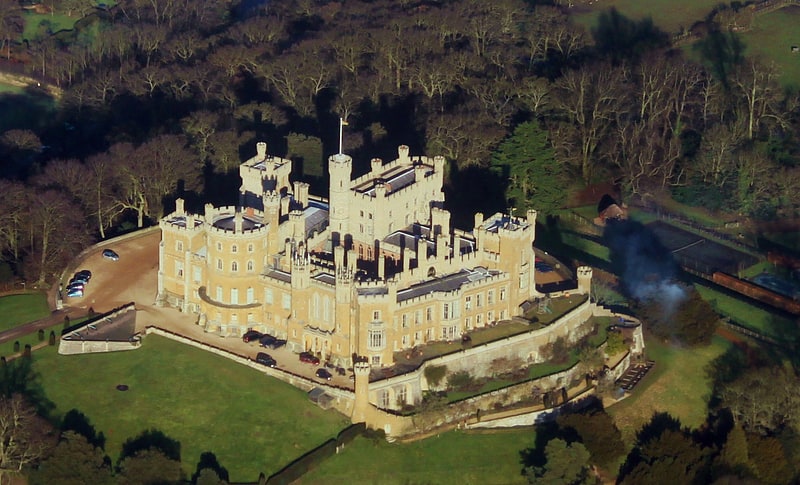
Hilltop citadel overlooking 16. Belvoir Castle is a historic castle and stately home in Leicestershire, England, situated 10 km west of the town of Grantham and 16 km north-east of Melton Mowbray. The Castle was first built immediately after the Norman Conquest of 1066 and has since been rebuilt at least three times, the surviving structure, a grade I listed building, dating from the early 19th century. It is the seat of David Manners, 11th Duke of Rutland, whose direct male ancestor inherited it in 1508. The traditional burial place of the Manners family was in the parish church of St Mary the Virgin, Bottesford, situated 5 km to the north of the Castle, but since 1825 they have been buried in the ducal mausoleum built next to the Castle in that year, to which their ancient monuments were moved. It remains the private property of the Duke of Rutland but is open to the general public.
The castle is situated at the extreme northerly corner of the county of Leicestershire and is sandwiched between Lincolnshire to the east and Nottinghamshire at west, and overlooks the Vale of Belvoir to the north-west on the Nottinghamshire border. It is surrounded by the villages of Redmile, Woolsthorpe, Knipton, Harston, Harlaxton, Croxton Kerrial and Bottesford. The antiquarian John Leland (d.1552) stated: "the Castle stands on the very nape of a high hill, steep up each way, partly by nature, partly by the working of men's hands." The 15,000 acre (6,000 hectare) Belvoir estate, situated in the heart of England's prime fox-hunting terrain is the headquarters of the famous Belvoir Hunt ("the Duke of Rutland's Hounds"), established in 1750 and now kennelled 1 km south-east of the Castle.[2]
Woolsthorpe Manor
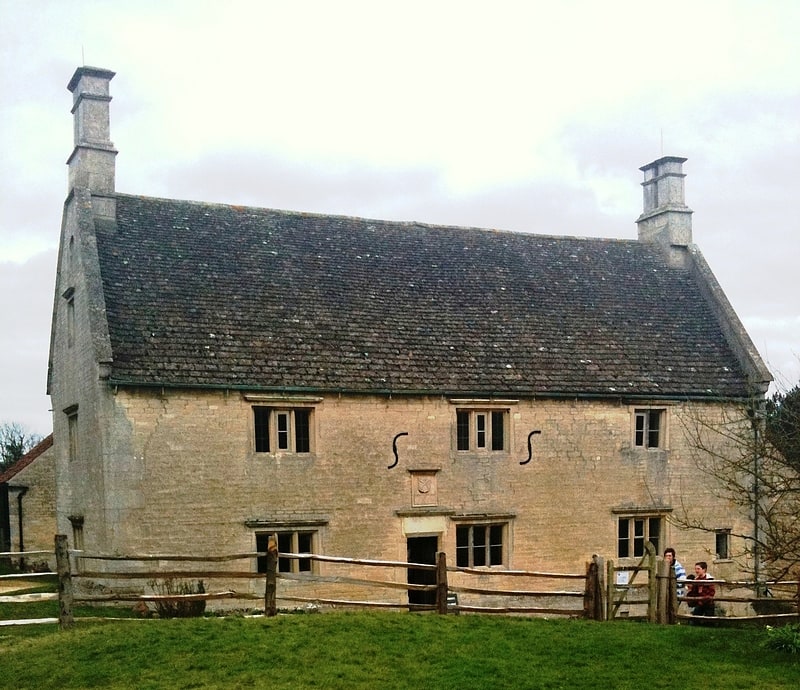
Woolsthorpe Manor in Woolsthorpe-by-Colsterworth, near Grantham, Lincolnshire, England, is the birthplace and was the family home of Sir Isaac Newton. He was born there on 25 December 1642. At that time, it was a yeoman's farmstead, principally rearing sheep.
Newton returned here in 1666 when Cambridge University closed due to the plague, and here, he performed many of his most famous experiments, most notably his work on light and optics. This is also said to be the site where Newton, observing an apple fall from a tree, was inspired to formulate his law of universal gravitation.
Now in the hands of the National Trust and open to the public all year round, it is presented as a typical seventeenth century yeoman's farmhouse (or as near to that as possible, taking into account modern living, health and safety requirements and structural changes that have been made to the house since Newton's time).
New areas of the house, once private, were opened up to the public in 2003, with the old rear steps (that once led up to the hay loft and grain store and often seen in drawings of the period) being rebuilt, and the old walled kitchen garden, to the rear of the house, being restored.
One of the former farmyard buildings has been equipped so that visitors can have hands-on experience of the physical principles investigated by Newton in the house.
It is a Grade I listed building.[3]
Address: 2 Water Lane, NG33 5PD Grantham
Guildhall Arts Centre

City or town hall in Grantham, England. Grantham Guildhall is a municipal building on St Peter's Hill, Grantham, Lincolnshire, England. It is a Grade II listed building.[4]
Grantham House
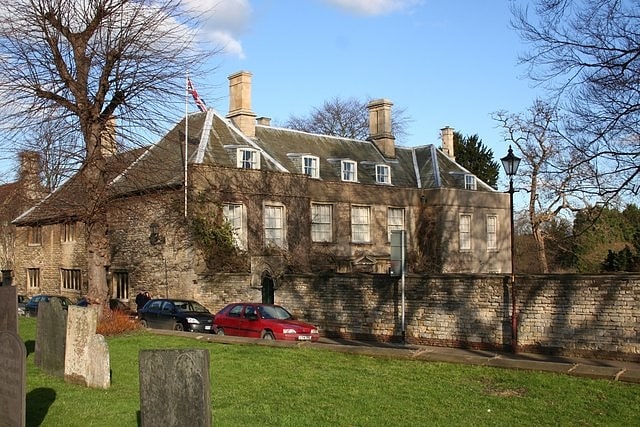
Tourist attraction in Grantham, England. Grantham House is a town house, built in 1380, which is owned by the National Trust. It is in Grantham, Lincolnshire, England.
The House is in Castlegate and its architectural features have been enhanced and remodelled several times over the centuries and include a 16th-century chimney stack, 17th century windows and an 18th-century staircase. The House and the Stables are both Grade I listed buildings and the Wall and Doorway for the riverside garden is Grade II* listed. It was known as 'Hall House' in the 16th century after the Hall family who owned it and important guests during this period include Cardinal Wolsey and Margaret Tudor, Queen of Scots.[5]
Address: Grantham House Castlegate, NG31 6SS Grantham
St Wulfram's Church

Medieval church with a towering spire. St Wulfram's Church, Grantham, is the Anglican parish church of Grantham in Lincolnshire, England. The church is a Grade I listed building and has the second tallest spire in Lincolnshire after Louth's parish church.
In his book England's Thousand Best Churches, Simon Jenkins begins his description of St Wulfram's: "Here is the finest steeple in England", and in 2020 an online contest run by poet Jay Hulme named it as the finest non-cathedral English church.[6]
Address: Church St, NG31 6RR Grantham
Ellys Manor House
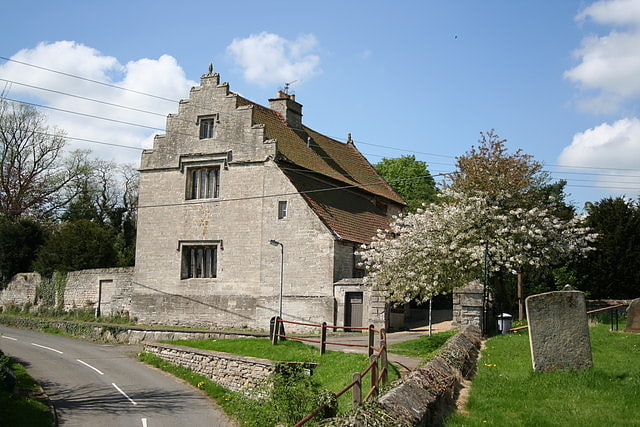
Ellys Manor House, or the Old Rectory is a late-fifteenth to early sixteenth century manor house in Great Ponton, Lincolnshire, England. It was built by Anthony Ellys, a wool merchant, and member of the Staple of Calais, who also built the tower of the village church. The house was restored as a Rectory, by the Grantham architect Wilfred Bond. The house is now privately owned, but the house and garden are open to the public at certain times; it is a member of the Historic Houses Association.[7]
Harlaxton Manor
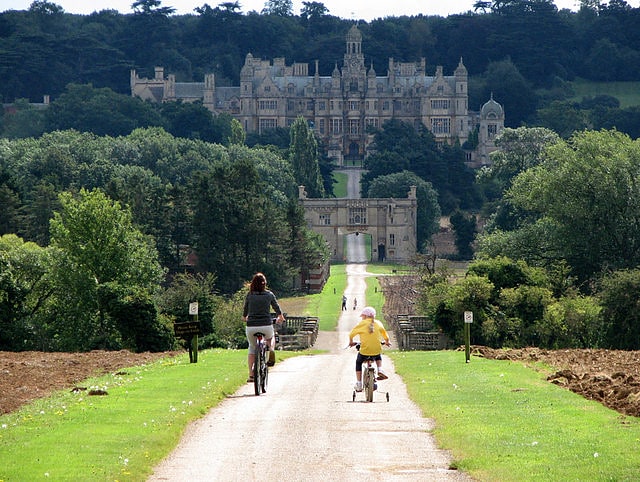
Building. Harlaxton Manor is a Victorian country house in Harlaxton, Lincolnshire, England. It was built for Gregory Gregory, a local squire and businessman. Gregory employed two of the leading architects of Victorian England, Anthony Salvin and William Burn and consulted a third, Edward Blore, during its construction. Its architecture, which combines elements of Jacobean and Elizabethan styles with Baroque decoration, makes it unique among England's Jacobethan houses. Harlaxton is a Grade I listed building on the National Heritage List for England, and many other structures on the estate are also listed. The surrounding park and gardens are listed Grade II* on the Register of Historic Parks and Gardens. It is now the British campus of the University of Evansville.[8]
The King's School
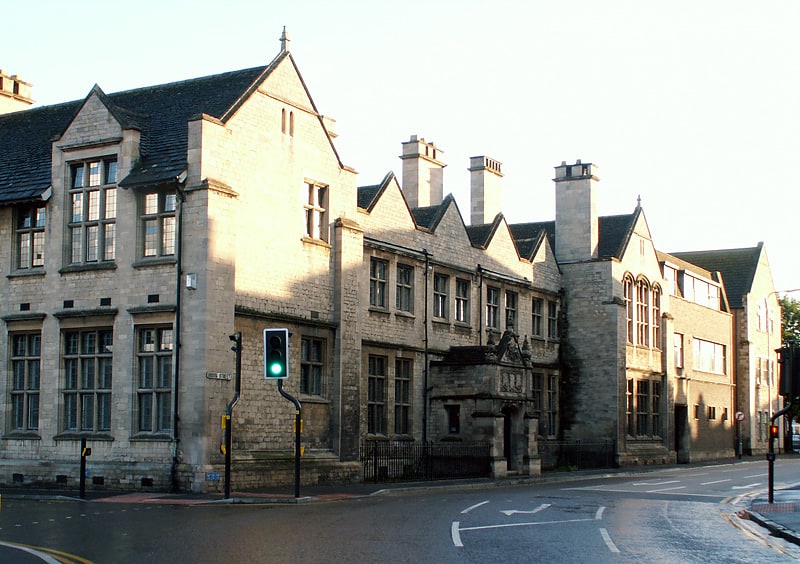
Grammar school in Grantham, England. The King's School is a British grammar school with academy status, in the market town of Grantham, Lincolnshire, England.
King's, with just over 1,000 male pupils, and another Grantham grammar school, Kesteven and Grantham Girls' School, share teaching resources for sixth form study in certain subjects; since 2006–2007, timetables for this study have been co-ordinated between both schools.[9]
Francis Trigge Chained Library
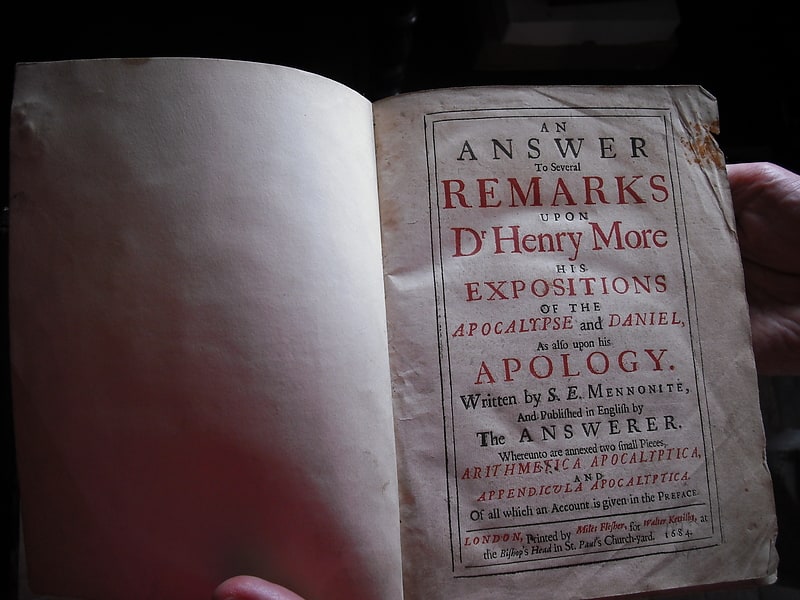
Library in Grantham, England. The Francis Trigge Chained Library is a chained library in Grantham, Lincolnshire, England which was founded in 1598. Located in the parvise, over the south porch of St Wulfram's Church, it has been claimed to be "the first public library" in Britain.[10]
Finkin Street Methodist Church
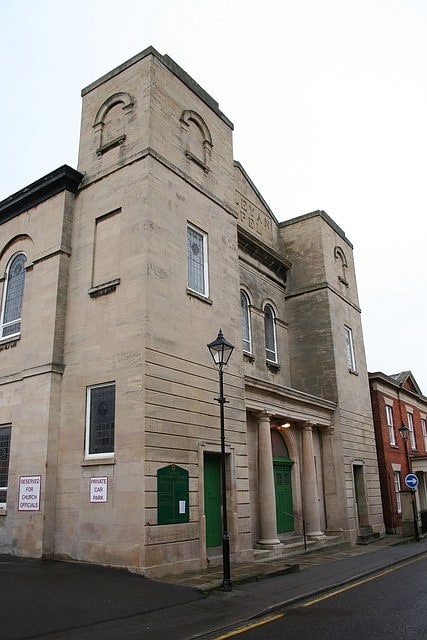
Building. Finkin Street Chapel is a Grade II listed building in Grantham, Lincolnshire. The Wesleyan Methodist chapel was built in 1840 and was the childhood church of Margaret Thatcher, former Prime Minister of the United Kingdom.
The chapel has a lectern dedicated to Thatcher's father, Alfred Roberts, who was a local preacher there.
In 2008, the congregation of the Central Methodist Church, Finkin Street joined with the congregation of St Peter's Hill United Reformed Church in Castlegate to form a local ecumenical partnership, ChristChurch Grantham. A decision was then taken in April 2011 to keep the Methodist premises on Finkin Street and sell the URC premises on Castlegate. The congregation meeting weekly in the chapel is now known as ChristChurch.[11]